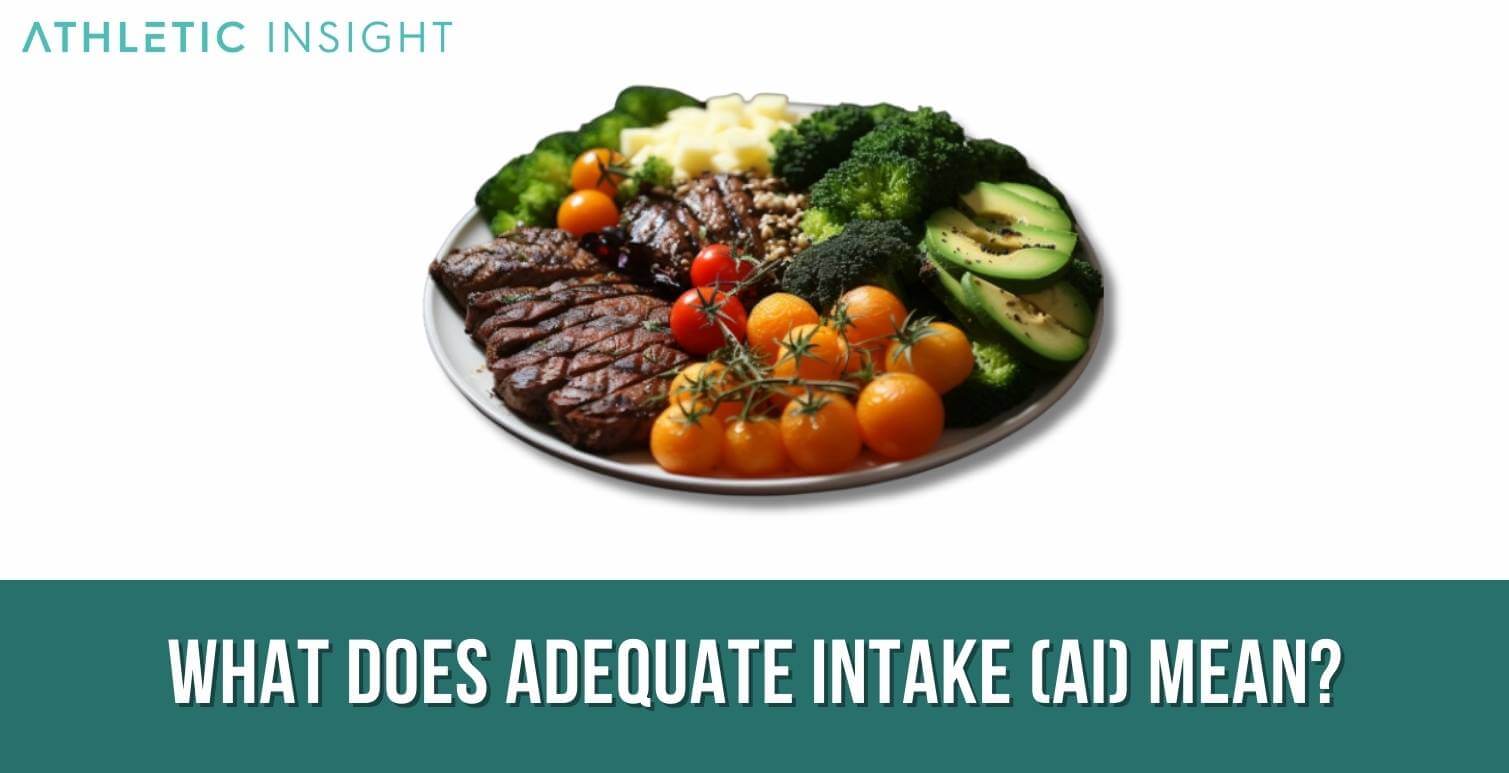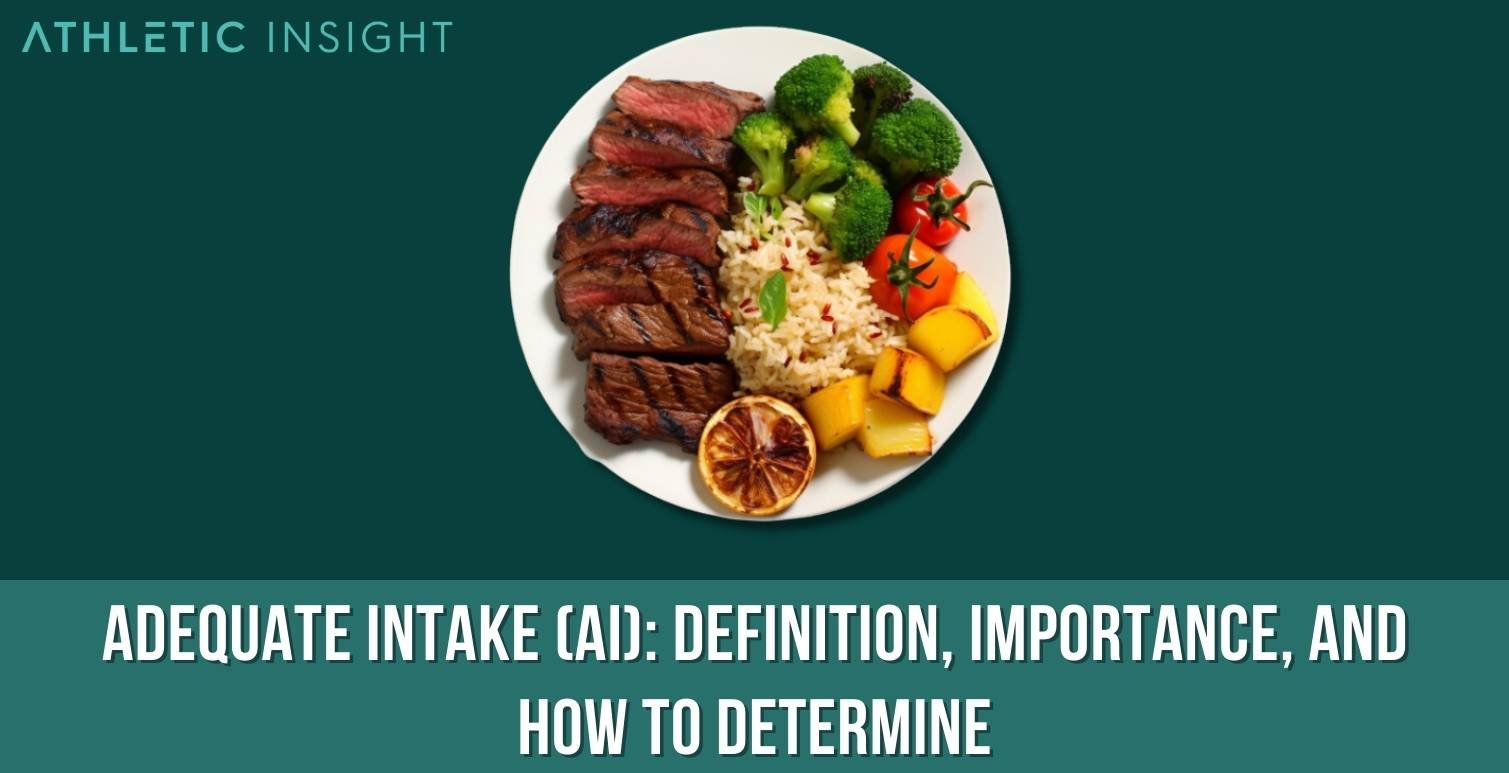In the world of nutrition, understanding the nuances of dietary intake is crucial for maintaining optimal health. One of the important terminologies to comprehend is the concept of Adequate Intake (AI), an essential guiding principle in nutritional science. This article explores the definition, importance, and determinants of AI, providing an in-depth understanding for both novices and professionals in the health and fitness industry.
What does Adequate Intake (AI) mean?
Adequate Intake (AI) refers to the average daily nutrient intake level deemed sufficient to meet the needs of healthy individuals in a particular life stage and gender group when there is insufficient scientific evidence to develop a Recommended Dietary Allowance (RDA). The AI is an estimation that overshadows nutritional ambiguity, providing a threshold to strive for in terms of nutritional consumption.

In the realm of sports nutrition, AI serves a pivotal role in ensuring athletes receive an optimal blend of nutrients to fuel their physical exertions. By considering the higher physical demands, AI helps in establishing more tailored sports nutrition guidelines, thereby enhancing athletic performance and recovery. Adequate Intake, when coupled with the Tolerable Upper Intake Level (UL) — the maximum level of daily nutrient intake unlikely to cause adverse health effects — provides a comprehensive nutritional spectrum that strikes the balance between sufficiency and excess.
What is the primary purpose of Adequate Intake (AI)?
The fundamental objective of AI is to provide guidelines for nutrient intake where RDA cannot be determined due to lack of sufficient scientific data. It is essentially a nutritional fallback that safeguards against nutrient deficiency in diverse populations. AI values help to illuminate the nutritional landscape, guiding dietary decisions to ensure a balanced and healthful diet.
How important is Adequate Intake (AI) in Nutrition?
In nutrition, AI commands paramount importance. It underpins dietary recommendations, provides benchmarks for nutrient consumption, and aids in the prevention of nutritional deficiencies. When it comes to nutrition, AI is a crucial tool in the promotion of overall health, influencing decisions about dietary formulation, nutritional policy development, and personal dietary choices.
How is Adequate Intake (AI) determined?
The determination of AI is a process underpinned by careful observation and scientific analysis. AI is established based on observed or experimentally determined approximations of nutrient intake by a group of healthy people. Factors considered in determining AI values include age, sex, health status, and life stage, among others.

For example, the AI values for different nutrients are determined through robust analysis of nutrient intake, correlation with indicators of nutritional adequacy, and careful consideration of various population subsets to ensure broad applicability.
What is the recommended Adequate Intake (AI) for Sodium?
For sodium, the stipulated AI stands at approximately 1,500 mg per day for adults, aiming to maintain proper fluid balance, nerve function, and muscle contraction. However, a ceiling limit or the Tolerable Upper Intake Level (UL) is set at 2,300 mg per day to avoid potential negative health implications associated with excessive sodium intake.
What is the recommended Adequate Intake (AI) for Calcium?
For calcium, a vital mineral for bone health and muscle function, the AI varies significantly across different life stages. For adults aged 19-50, the AI of calcium is set at 1,000 mg per day, while for older adults, it increases to 1,200 mg per day, reflecting the higher requirements for bone health maintenance in the elderly population.
What is the recommended Adequate Intake (AI) for Protein?
Protein, a critical macronutrient for growth and repair, has an AI set at 56 grams per day for adult males and 46 grams per day for adult females. However, these values can increase significantly for athletes or physically active individuals due to heightened muscle repair and growth needs.
How is the Adequate Intake (AI) for Athletes determined?
Determining AI for athletes is a more complex process, requiring consideration of factors like the type and intensity of sport, training frequency, total energy expenditure, and individual nutritional needs. A tailored approach is thus adopted, often involving collaboration with sports nutritionists or dietitians to create bespoke dietary plans that align with the athletes’ specific demands and goals.
Are there any specific Adequate Intake (AI) values for different age groups?
Yes, AI values are differentiated across various age groups, reflecting the differing nutritional needs throughout the lifecycle. Infants, children, teenagers, adults, and older adults all have unique AI values. For instance, the AI for calcium increases during adolescence due to the rapid bone growth, and also in older age to mitigate the risk of osteoporosis.
What are the benefits of Adequate Intake (AI)?
AI offers numerous benefits, including the prevention of nutritional deficiencies, guidance for meal planning and dietary formulation, enhanced understanding of individual nutritional requirements, and promotion of overall health and well-being.

- Prevention of nutritional deficiencies
- Guidance for meal planning and dietary formulation
- Enhanced understanding of individual nutritional requirements
- Promotion of overall health and well-being
Are there potential risks of not following Adequate Intake (AI)?
Yes, failure to adhere to AI can potentially lead to nutritional deficiencies, compromised health, decreased immune function, and increased risk of chronic diseases. It’s also worth noting that exceeding the AI without reaching the Tolerable Upper Intake Level can also pose health risks due to nutrient overconsumption.
- Nutritional deficiencies
- Compromised health
- Decreased immune function
- Increased risk of chronic diseases
What is the difference between Adequate Intake (AI) and RDA?
While both AI and RDA serve as nutritional guidelines, they differ significantly in their derivation and application. RDA is the daily dietary intake level sufficient to meet the nutrient requirements of nearly all (97-98%) healthy individuals in a particular life stage and gender group.
Conversely, AI is employed when sufficient evidence is lacking to establish an RDA. Therefore, while RDAs are rooted in robust scientific evidence, AIs are more prudent estimations. Thus, these two facets form an integral part of the Dietary Reference Intakes (DRIs), guiding individuals towards healthful dietary practices.
Does AI apply to individuals with specific health conditions?
AI values are derived primarily from data on healthy populations. For individuals with specific health conditions that may affect their nutrient needs or metabolism, it’s advised to consult with healthcare professionals or a registered dietitian to tailor dietary plans to meet their specific needs.
How does AI relate to other Dietary Reference Intakes (DRIs)?
AI is a part of the DRIs, which also include Estimated Average Requirements (EAR), Recommended Dietary Allowances (RDA), and Tolerable Upper Intake Levels (UL). While RDA is the most well-known among these, in cases where RDA cannot be determined due to insufficient scientific data, AI is used.
Can one achieve their AI for all nutrients through diet alone?
While a balanced, varied diet is the best approach to achieve the AI for most nutrients, some individuals may need to use fortified foods or dietary supplements to meet their nutrient needs, particularly for nutrients such as vitamin D.
Does AI consider bioavailability of nutrients?
AI values are set considering the average nutrient intakes of healthy populations, which inherently consider the bioavailability of nutrients. Bioavailability, or the portion of a nutrient that the body can absorb and utilize, can be influenced by numerous factors, including the food matrix, presence of other dietary components, and individual factors such as age and health status.
Does the AI vary between countries?
Yes, AI values can vary between countries due to differences in dietary patterns, prevalence of diseases, environmental factors, and even the methodologies used to set these values. Therefore, individuals should refer to the guidelines set by their country or region’s nutrition or health authority.



